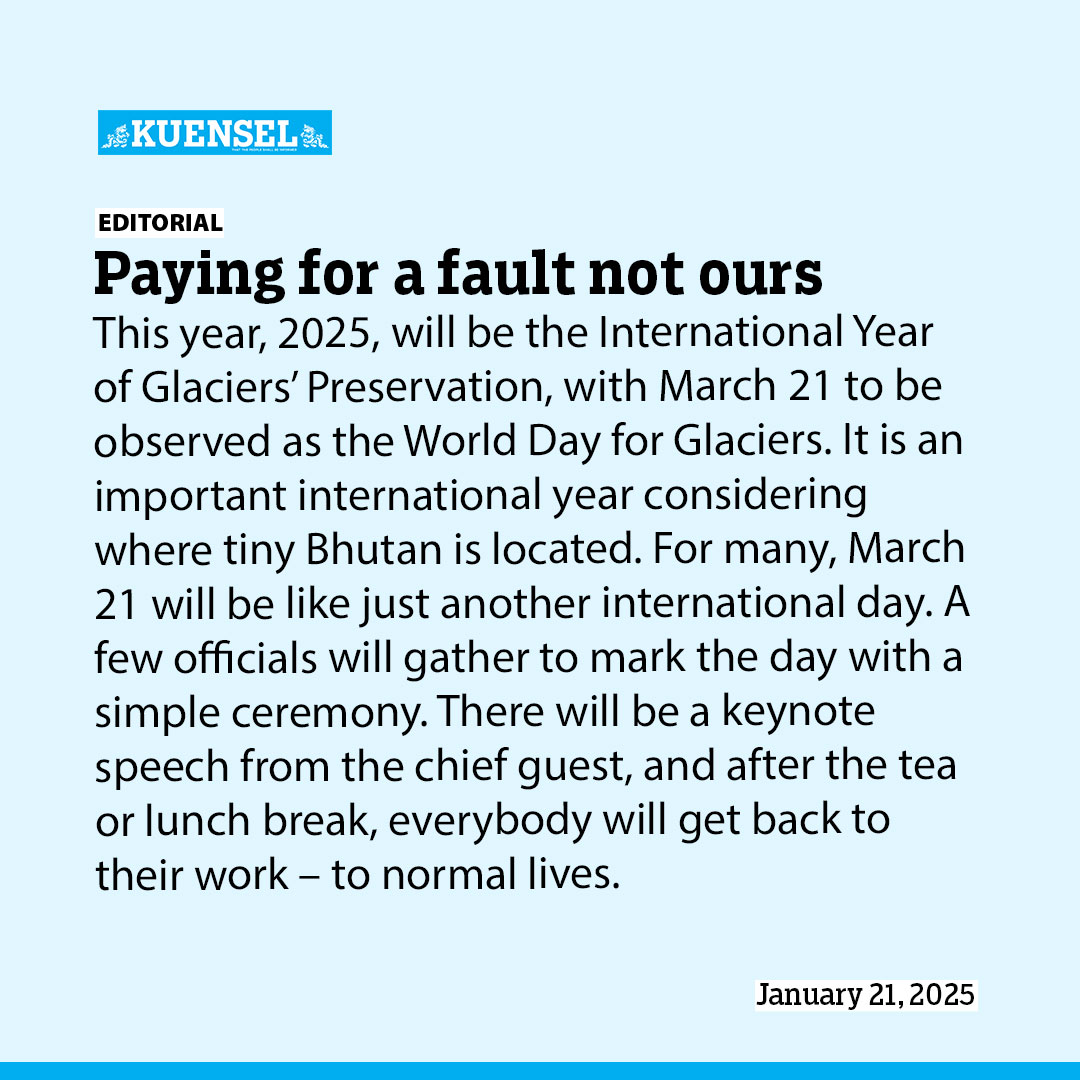This year, 2025, will be the International Year of Glaciers’ Preservation, with March 21 to be observed as the World Day for Glaciers. It is an important international year considering where tiny Bhutan is located.
For many, March 21 will be like just another international day. A few officials will gather to mark the day with a simple ceremony. There will be a keynote speech from the chief guest, and after the tea or lunch break, everybody will get back to their work – to normal lives.
The concerns of melting or receding glaciers is taken seriously only among experts or glaciologists who make arduous treks to see how the geography is changing far away from where we live normal lives. But the statistics experts share are alarming. It should be a big concern for all of us whether in the mountains or in the plains.
Changing climate and rising global temperatures are melting our glaciers – the reservoir of fresh water and a rich natural resource. Glaciers are receding due to both climate-induced and non-climate-induced drivers. According to the World Meteorological Organisation (WMO), in 2023, glaciers suffered the largest mass loss in the five decades of record-keeping and it was the second consecutive year in which all regions of the world with glaciers reported ice loss.
In Bhutan where glaciers play an important role in our survival, experts are warning of clear and present dangers. Recent studies show that glaciers like Ganjula, Thana and Shodug are witnessing billions of litres of glacial water loss. For an ordinary Bhutanese carving out a livelihood from farming or a small business, melting glaciers is not a concern. However, with warnings supported by scientific studies, including on the glaciers in Bhutan, we should be concerned.
The World Day for Glaciers Day will highlight the impacts of glacier changes on downstream communities and ecosystems. In our case, we are aware of the dangers. According to the Bhutan Glacial Lake Inventory 2021, Bhutan records 567 glaciers covering 55.04Km square—Phochhu has the maximum. Of the glaciers, 17 are potentially dangerous—Punatsangchhu has 11, Mangdechhu has 3, Chamkhar chhu has two and one in Kurichhu.
Export of hydropower, even after years of discussions on not putting all eggs in a basket, is still the main source of revenue. Our hydropower plants are dependent on the glacial-fed rivers and also prone to the changes in what happens in the mountains. In the meantime, the warmest years are recorded in the past one decade. 2024, for instance, was recorded as the warmest year on record. The average temperature exceeded 1.5 degrees Celsius above pre-industrial levels for the first time in a single year.
At home, we are feeling the brunt of the increasing global temperature. Worse, experts say that mountainous countries will feel the biggest brunt of increase in global temperatures.
We may be known for our initiatives to be recognised as a carbon-neutral country, but we are ranked the 38th most vulnerable country to climate change threats. This means that while it is not our doing, we need to prepare. Unfortunately, we are the 62nd country that lags preparedness, according to the State of Climate in Asia report 2023.
In other words, we are still not prepared in terms of warning systems or disaster preparedness even when in a vulnerable region. The message is clear – if we cannot prevent our glaciers from melting, we need to prepare for the consequences. It would be a disaster bigger than a glacial lake outburst if we are not heeding to the warnings.


